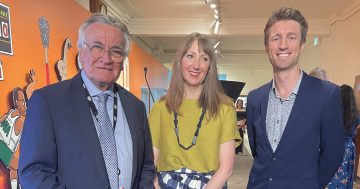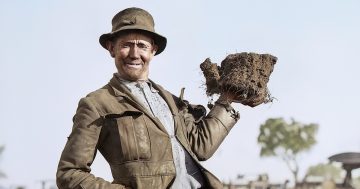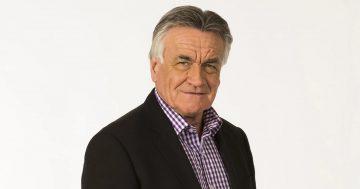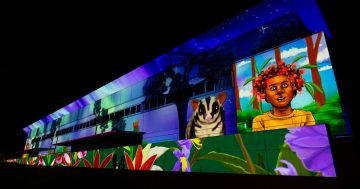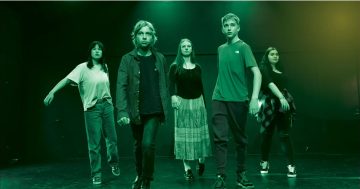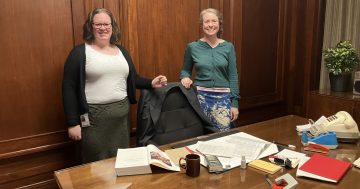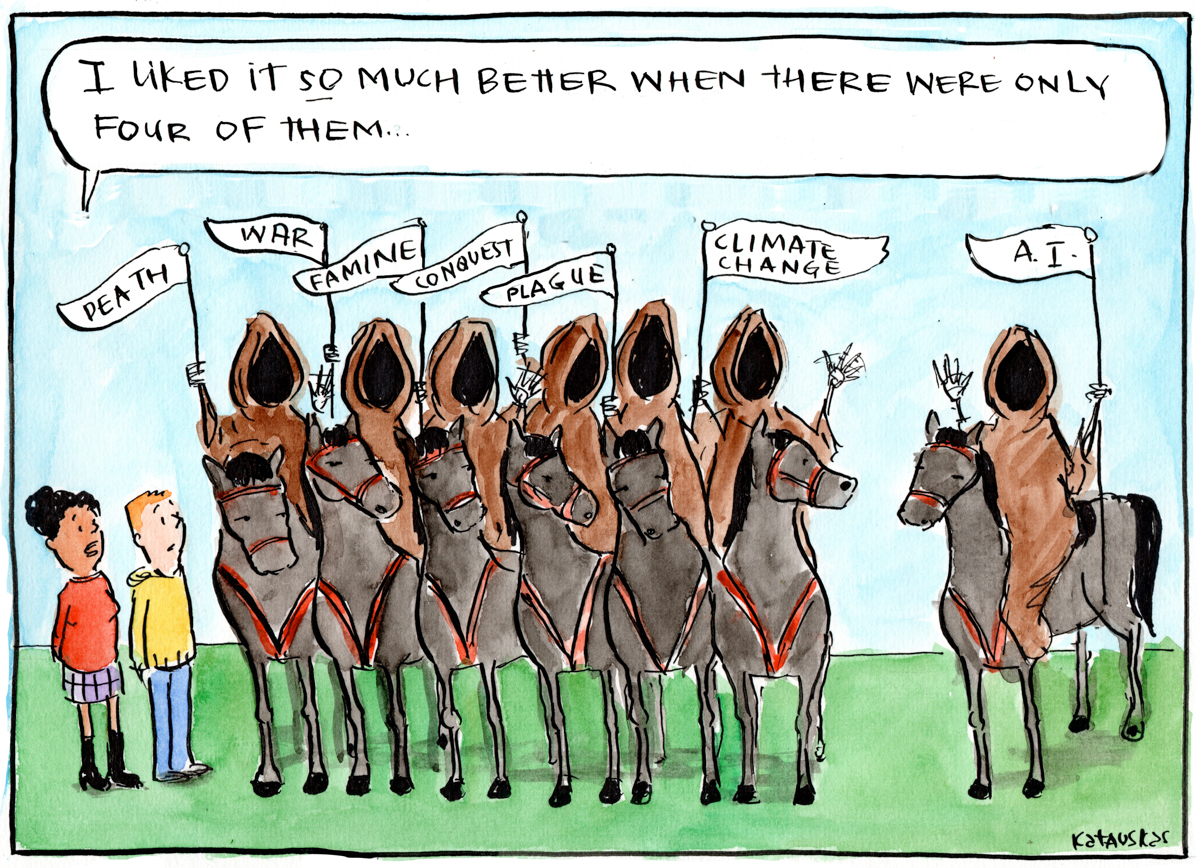
Fiona Katauskas’s Guardian cartoon comments on the worrying rise of artificial intelligence. Image: Supplied.
As your mother told you when things got particularly exciting, it’s all fun and games… until someone loses an eye.
The annual Behind the Lines exhibition of political cartoons opens this week at the Museum of Australian Democracy (MoAD) with the theme Fun and Games, and a political piñata strung up on a Hills Hoist at the door.
It’s been a tough year and the 125 cartoons from 46 cartoonists deal with everything from the referendum to the distinctly unfunny Middle East conflict.
MoAD board chair Barrie Cassidy says it’s been challenging, adding “if you don’t respect the cartoonists they have a way of paying you back, so stay on board!”
He says the exhibition focusses on emerging talent and diversity and it’s very much a two-way street, bringing thousands of people through the doors each year.
One of those is Jess Harwood, whose cartoons are part of the exhibition for the first time. Ten years ago, she walked through the doors as a teenager and thought “I can do that!”. She’s now been published as a freelancer by the BBC, the Guardian and ABC, with several cartoons that have gone viral.
Jess says cartooning jobs aren’t there in the mainstream any longer so it’s all about self publishing and social media for millennial cartoonists, where there’s a lot more diversity in viewpoints.
Her own vantage point as the daughter of an Indian migrant gave her insight to the diaspora community’s struggles during COVID when they were labelled a biosecurity risk.
“I’m venting some big feelings through comics and you definitely need persistence,” she says. “This has always been a very male-dominated profession and we need to pass the mic to some other people or we’re missing opportunities for cartooning.”
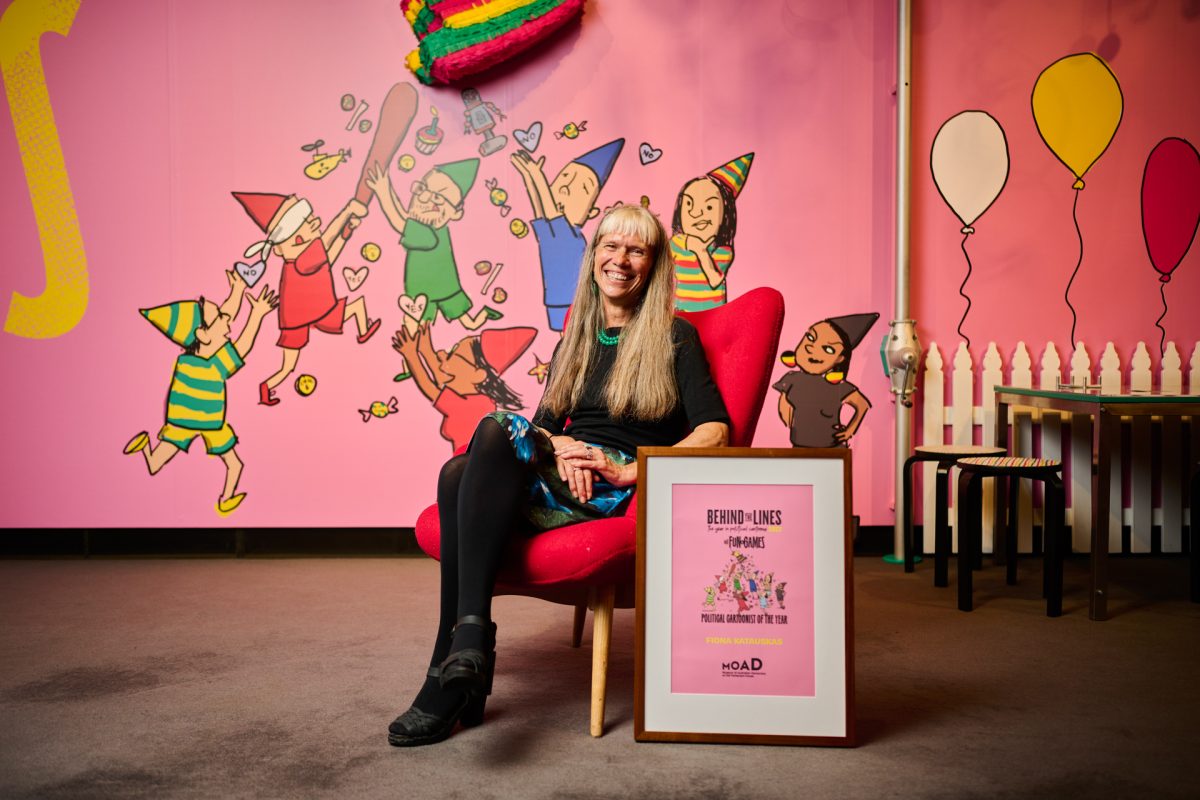
Fiona Katauskas says the decline of newspapers has given rise to social media, longer-form panels and broader themes for cartoonists. Photo: Supplied.
It’s a theme echoed by cartoonist of the year Fiona Katauskas who says it warms the cockles of her heart to see young cartoonists emerging from many different backgrounds and publishing their work in many different ways.
“The number of jobs just died as the media changed so there weren’t the jobs for young people to come up, because cartoonists hang onto those roles until they fall off the stool.
“It used to be that every household would have a newspaper to flick through. I began with the Sydney Morning Herald and was given a free hand so I did lots of politics, but would get the call to do something for the food pages, or the drive section.
“A lot of that’s changed with syndicated cartooning in the mainstream media but Instagram and other social media has created the opportunity to do longer-form panels, to look at broader themes. It’s not just a single frame gag any more.”
Barrie says cartoonists have a more serious role in a time when democracy looks increasingly fragile around the world. He spent the days around the launch talking to cartoonists who are finding the Middle East conflict particularly hard going.
“They need to make a profound point through cartoons but they’re under enormous pressure on this issue with more scrutiny than almost any other issues they’ve ever faced,” he told Region.
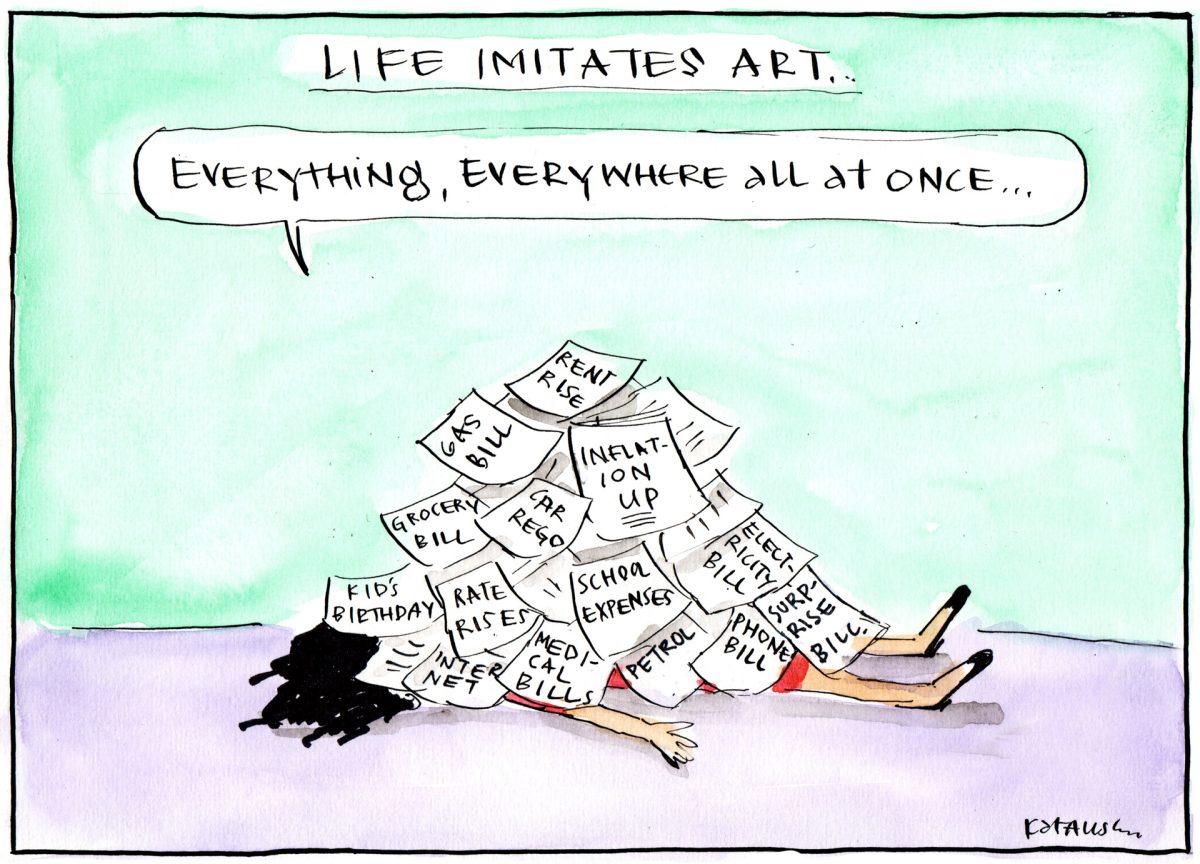
Cartoonist Fiona Katauskas comments on the cost of living. Image: Supplied.
He thinks Australian political cartooning is in good shape because it’s diverse, but not yet polarised.
“I’d call it enduring. It’s like a famous photo in your memory if you see a clever cartoon that sums up so much, takes a complex issue but reduces it to something digestible,” he says, recalling the famous Nicholson cartoon of Gough Whitlam’s China visit, with the great man asking Margaret, post-earthquake, whether the earth had moved for her too.
MoAD director Stephanie Bull says the exhibition is one of the museum’s most popular events, touring to six venues this year.
“Political cartoons are an important part of our democracy – they encourage debate and understanding,” she says.
“Behind the Lines is a highlight on the MoAD calendar, it allows us to celebrate all cartoonists both established and emerging. This exhibition showcases their skills and explores their contributions to our social political discourse and culture.”
Behind the Lines is open now at the Museum of Australian Democracy. Entry is free from 9 am – 5 pm daily.
